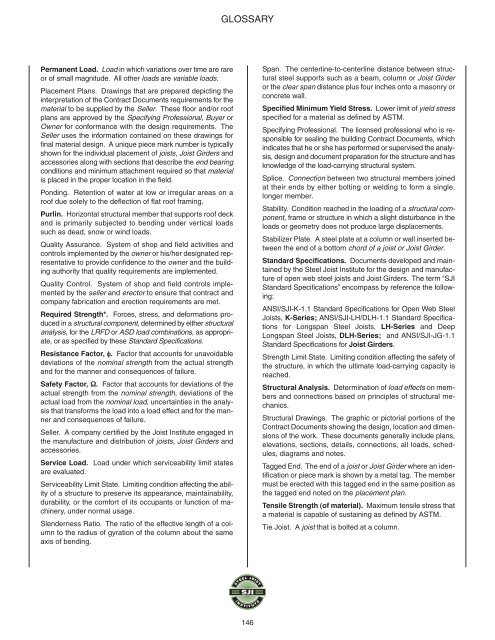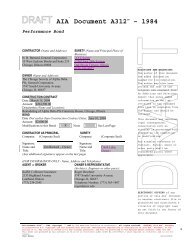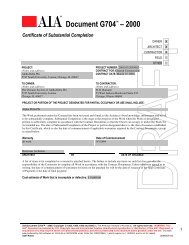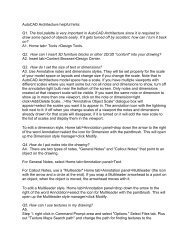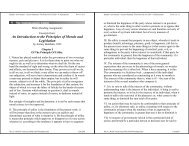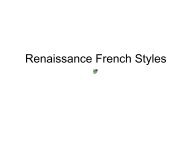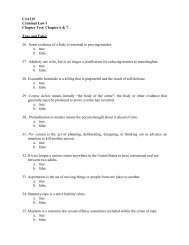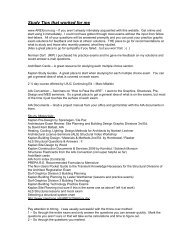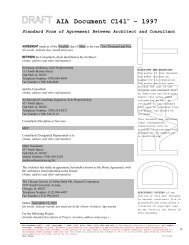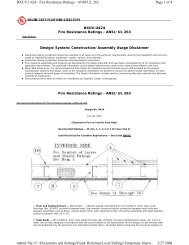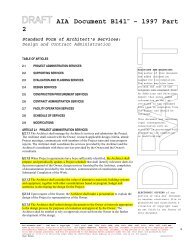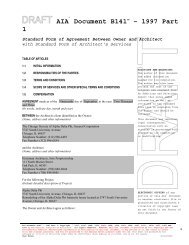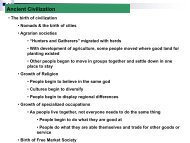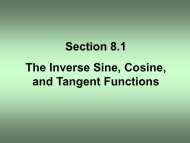Steel Joist Manual
Steel Joist Manual
Steel Joist Manual
Create successful ePaper yourself
Turn your PDF publications into a flip-book with our unique Google optimized e-Paper software.
GLOSSARY<br />
Permanent Load. Load in which variations over time are rare<br />
or of small magnitude. All other loads are variable loads.<br />
Placement Plans. Drawings that are prepared depicting the<br />
interpretation of the Contract Documents requirements for the<br />
material to be supplied by the Seller. These floor and/or roof<br />
plans are approved by the Specifying Professional, Buyer or<br />
Owner for conformance with the design requirements. The<br />
Seller uses the information contained on these drawings for<br />
final material design. A unique piece mark number is typically<br />
shown for the individual placement of joists, <strong>Joist</strong> Girders and<br />
accessories along with sections that describe the end bearing<br />
conditions and minimum attachment required so that material<br />
is placed in the proper location in the field.<br />
Ponding. Retention of water at low or irregular areas on a<br />
roof due solely to the deflection of flat roof framing.<br />
Purlin. Horizontal structural member that supports roof deck<br />
and is primarily subjected to bending under vertical loads<br />
such as dead, snow or wind loads.<br />
Quality Assurance. System of shop and field activities and<br />
controls implemented by the owner or his/her designated representative<br />
to provide confidence to the owner and the building<br />
authority that quality requirements are implemented.<br />
Quality Control. System of shop and field controls implemented<br />
by the seller and erector to ensure that contract and<br />
company fabrication and erection requirements are met.<br />
Required Strength*. Forces, stress, and deformations produced<br />
in a structural component, determined by either structural<br />
analysis, for the LRFD or ASD load combinations, as appropriate,<br />
or as specified by these Standard Specifications.<br />
Resistance Factor, φ. Factor that accounts for unavoidable<br />
deviations of the nominal strength from the actual strength<br />
and for the manner and consequences of failure.<br />
Safety Factor, Ω. Factor that accounts for deviations of the<br />
actual strength from the nominal strength, deviations of the<br />
actual load from the nominal load, uncertainties in the analysis<br />
that transforms the load into a load effect and for the manner<br />
and consequences of failure.<br />
Seller. A company certified by the <strong>Joist</strong> Institute engaged in<br />
the manufacture and distribution of joists, <strong>Joist</strong> Girders and<br />
accessories.<br />
Service Load. Load under which serviceability limit states<br />
are evaluated.<br />
Serviceability Limit State. Limiting condition affecting the ability<br />
of a structure to preserve its appearance, maintainability,<br />
durability, or the comfort of its occupants or function of machinery,<br />
under normal usage.<br />
Slenderness Ratio. The ratio of the effective length of a column<br />
to the radius of gyration of the column about the same<br />
axis of bending.<br />
Span. The centerline-to-centerline distance between structural<br />
steel supports such as a beam, column or <strong>Joist</strong> Girder<br />
or the clear span distance plus four inches onto a masonry or<br />
concrete wall.<br />
Specified Minimum Yield Stress. Lower limit of yield stress<br />
specified for a material as defined by ASTM.<br />
Specifying Professional. The licensed professional who is responsible<br />
for sealing the building Contract Documents, which<br />
indicates that he or she has performed or supervised the analysis,<br />
design and document preparation for the structure and has<br />
knowledge of the load-carrying structural system.<br />
Splice. Connection between two structural members joined<br />
at their ends by either bolting or welding to form a single,<br />
longer member.<br />
Stability. Condition reached in the loading of a structural component,<br />
frame or structure in which a slight disturbance in the<br />
loads or geometry does not produce large displacements.<br />
Stabilizer Plate. A steel plate at a column or wall inserted between<br />
the end of a bottom chord of a joist or <strong>Joist</strong> Girder.<br />
Standard Specifications. Documents developed and maintained<br />
by the <strong>Steel</strong> <strong>Joist</strong> Institute for the design and manufacture<br />
of open web steel joists and <strong>Joist</strong> Girders. The term “SJI<br />
Standard Specifications” encompass by reference the following:<br />
ANSI/SJI-K-1.1 Standard Specifications for Open Web <strong>Steel</strong><br />
<strong>Joist</strong>s, K-Series; ANSI/SJI-LH/DLH-1.1 Standard Specifications<br />
for Longspan <strong>Steel</strong> <strong>Joist</strong>s, LH-Series and Deep<br />
Longspan <strong>Steel</strong> <strong>Joist</strong>s, DLH-Series; and ANSI/SJI-JG-1.1<br />
Standard Specifications for <strong>Joist</strong> Girders.<br />
Strength Limit State. Limiting condition affecting the safety of<br />
the structure, in which the ultimate load-carrying capacity is<br />
reached.<br />
Structural Analysis. Determination of load effects on members<br />
and connections based on principles of structural mechanics.<br />
Structural Drawings. The graphic or pictorial portions of the<br />
Contract Documents showing the design, location and dimensions<br />
of the work. These documents generally include plans,<br />
elevations, sections, details, connections, all loads, schedules,<br />
diagrams and notes.<br />
Tagged End. The end of a joist or <strong>Joist</strong> Girder where an identification<br />
or piece mark is shown by a metal tag. The member<br />
must be erected with this tagged end in the same position as<br />
the tagged end noted on the placement plan.<br />
Tensile Strength (of material). Maximum tensile stress that<br />
a material is capable of sustaining as defined by ASTM.<br />
Tie <strong>Joist</strong>. A joist that is bolted at a column.<br />
146


